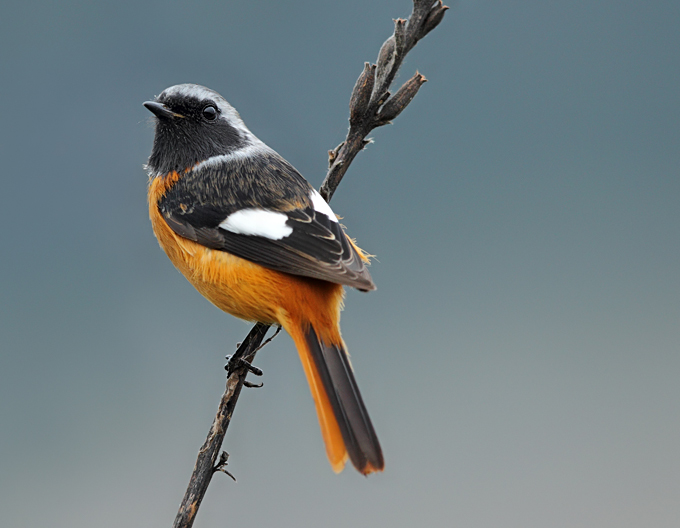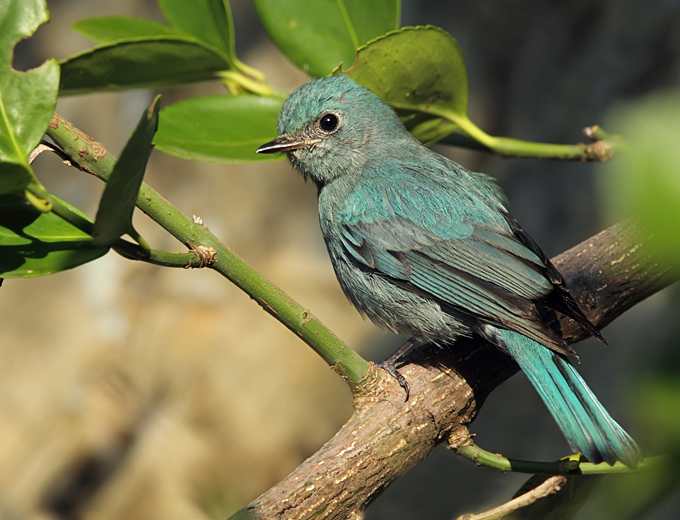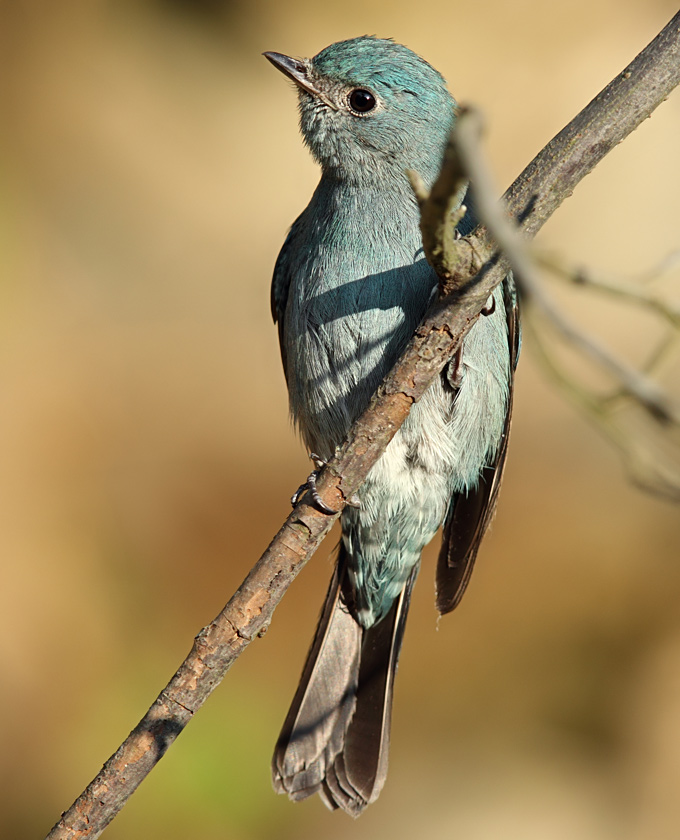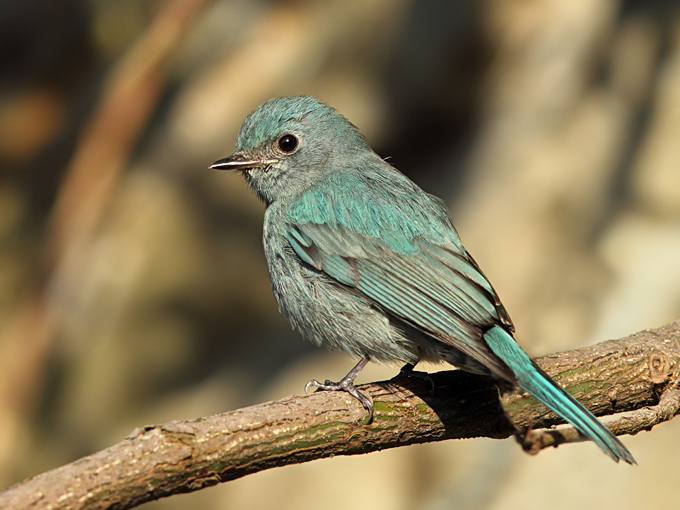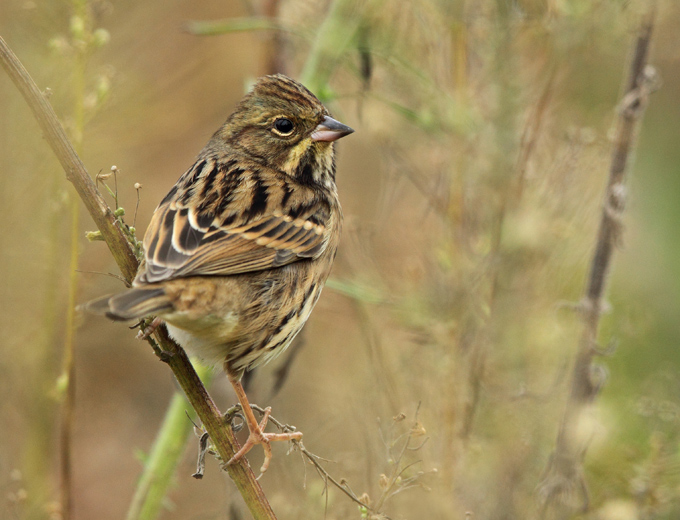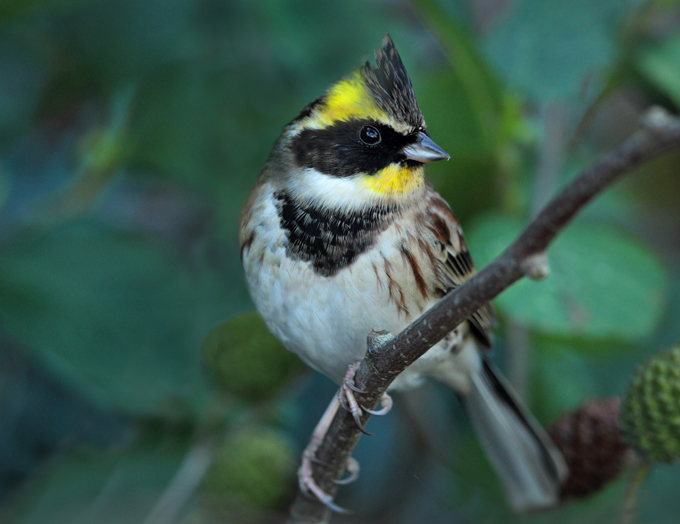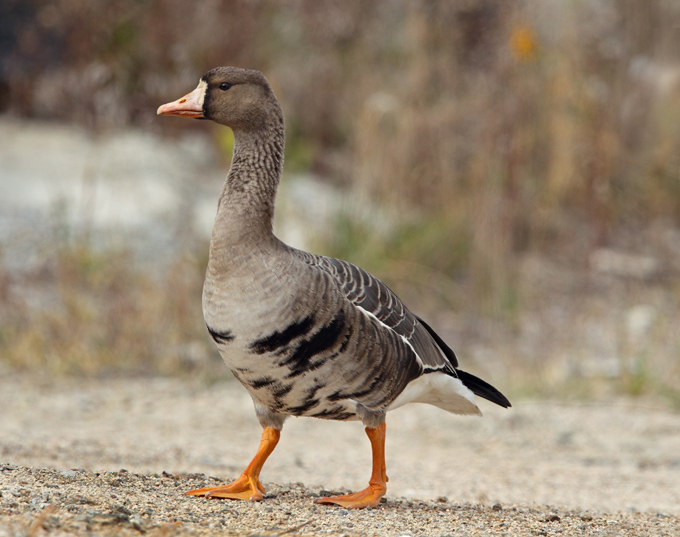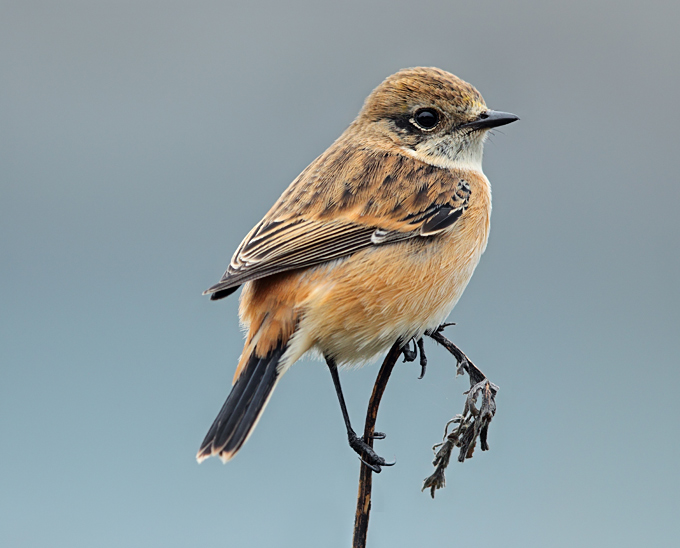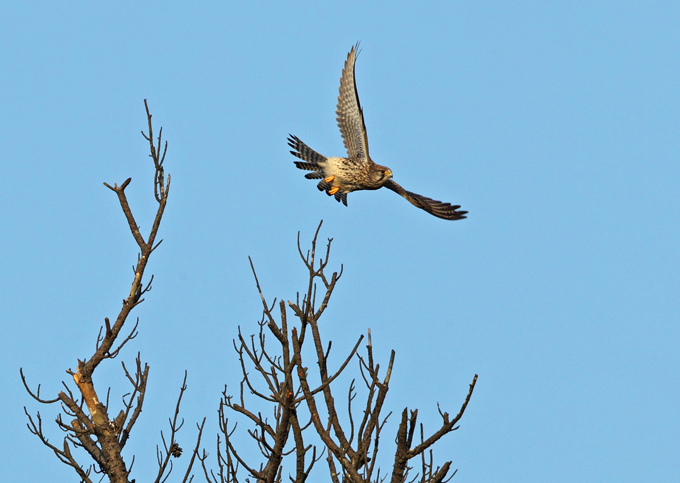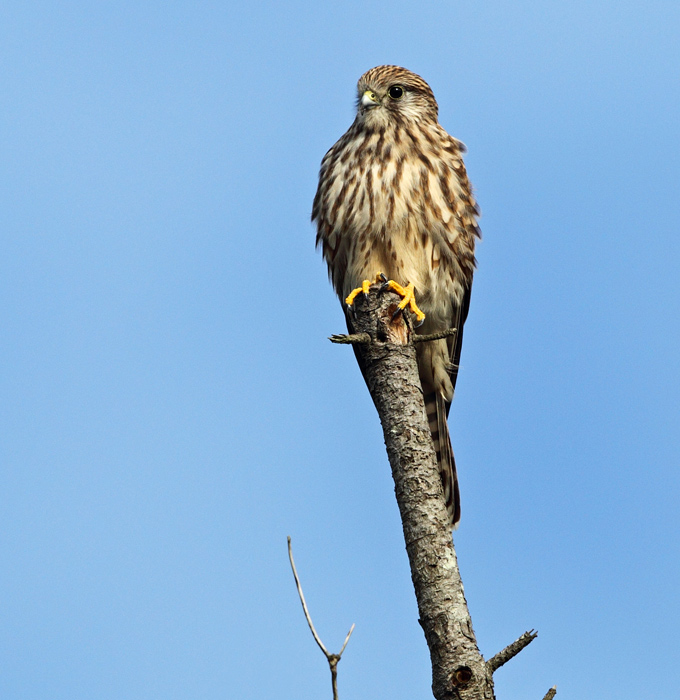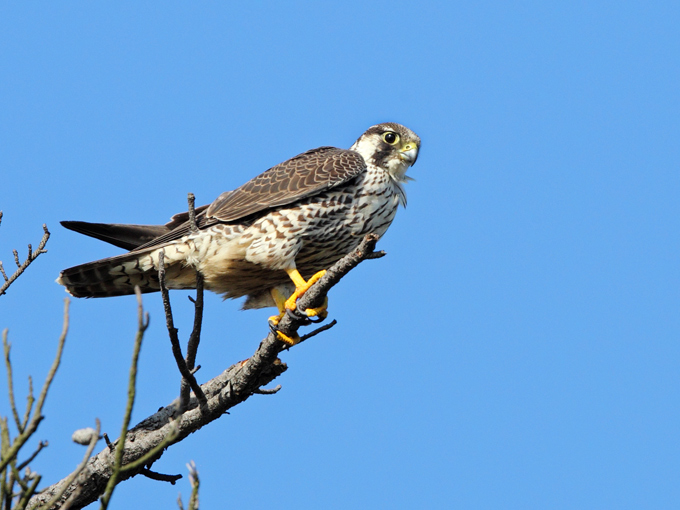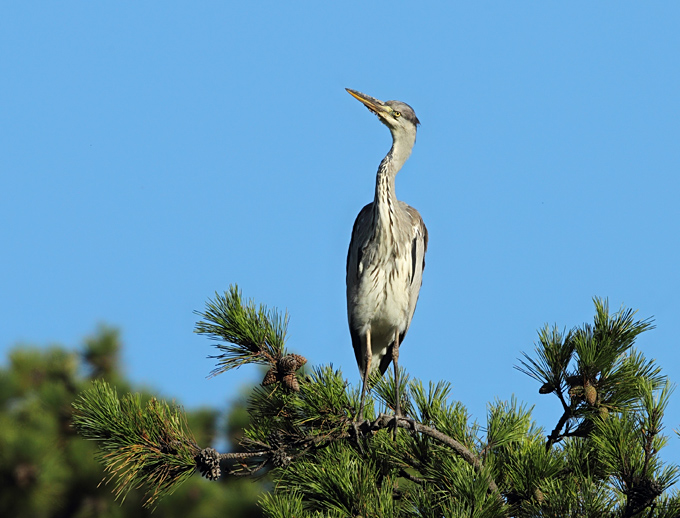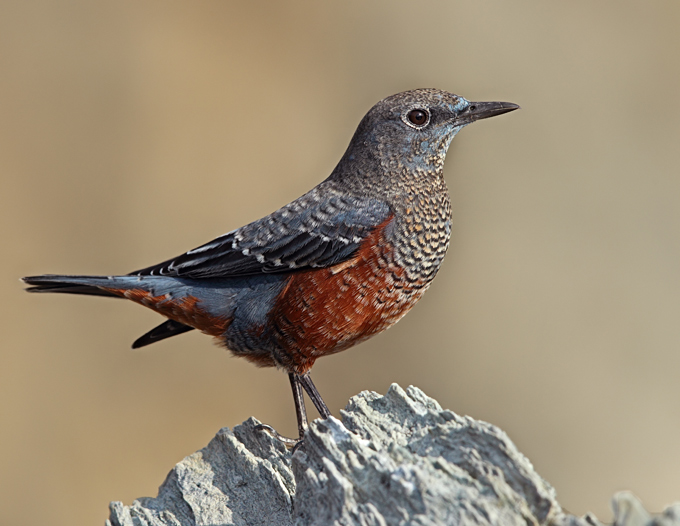Bird News from Robin Newlin
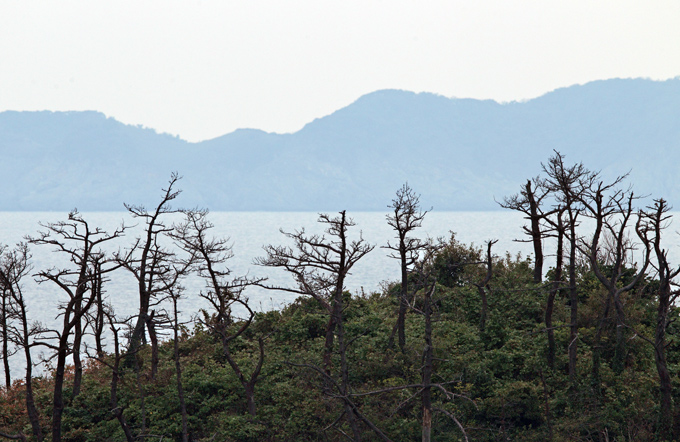
-
Friday 24th: Morning spent entirely in the boardwalk and eastern pathways area-Yellow-browed Warblers, Daurian Redstarts, Bramblings and Siskins continued, but in small and quiet numbers. The return boat trip was uneventful.
Finally, outside the Gunsan Train Station, a fare-thee-well mix of heard and/or seen birds: Azure-winged Magpies, Bull-headed Shrike, Yellow-browed Warbler, a Common Pheasant.
-
Thursday 23th: A Siskin flock, a few Black-faced Buntings, and some Bramblings at the quarry in the early morning, but overall a sense of few birds. At the boardwalk, however, a flash of blue and a jolt of excitement: a Verditer Flycatcher, working the sunlit bushes on the rocky slopes. At the reservoir some hours later: 2 Baikal Teal along with several Mandarin Ducks. Back at the boardwalk, no sign of the Verditer, but an Arctic Warbler calling, a few Yellow-browed Warblers, a Red-flanked Bluetail., and an Asian Brown Flycatcher.
-
Wednesday 22th: Rain ended, replaced by brisk northeasterly winds, and little evidence of any significant fall of birds. A single Japanese Reed Bunting and a small flock of Siskins at the quarry and Green Sandpiper at the reservoir. 2 Eurasian Sparrowhawks. Good conversation with the driver of an enormous bulldozer (!) on why there are so few swallows any more. Later, wind-sheltered, sunny spots on the leeward side of the island near the lighthouse yielded a Varied Tit, a Red-flanked Bluetail, a Taiga Flycatcher and 2 Goldcrests. Overhead, a Japanese Sparrowhawk. A small kettle of 4 Eastern Buzzards held one Upland Buzzard. A Goshawk bullied past. Back at the village, now two Northern Lapwings, a Eurasian Kingfisher and an Asian Brown Flycatcher.
-
Tuesday 21th: Rain, mostly heavy, all day. On occasional circuits: an Oriental Reed Warbler. Siskins and Bramblings apparent in small flocks, and c. 70 Barn Swallows. Scattered Black-faced Buntings, Yellow-throated Buntings and several Yellow Wagtails in evidence despite the downpour. A flock of 8 Mandarin Ducks winging over the harbor.
-
Monday 20th.: In morning intermittent light rain at the reservoir, some real excitement: a possible Jack Snipe. Précis of the main points: bird very briefly seen, flushed at very close range in good light, flying away from me. I did not get binoculars on it before it dropped over an embankment. The bird was tiny; size and structure seemed roughly like (and maybe smaller than) a Common Sandpiper. Flight was straight (arching smoothly up and then down), steady (e.g. no teetering, zigzagging, wandering), and quick. Overall the bird seemed dark: grey-toned and black-light lines (“braces”) on back (these seen very briefly), white trailing edge to secondaries, impression of white edges to sides of tail, (these last two points a millisecond longer). Tail appeared not wide and flared, snipe-style, but rather narrow and tapered: i.e., the proverbial “wedge shape.” I did not see any leg/feet protrusion. Wings did not appear as long or as pointed as a typical snipe. I saw the back of the head (roughly concolorous with back) but not the beak. Call was recognizably snipe-like, somewhat like a Common Snipe but very soft, quick and low, in a rapid four-syllable burst-2 short followed by two shorter notes in quick succession. The bird flew perhaps 50 yards up a heavily vegetated embankment but arced over a hedge of dense vines just before I could get the optics on target. I searched the area but much of the vegetation was impractically tall and dense. Several return walks about the pond verge were fruitless. The call “voice” sounded very similar to online recordings of single note Jack Snipe alarm calls, but I have not encountered a recording that duplicates the 4-note sequence I heard. I have no previous experience with the species, and repeat that the views I had were brief.
Later in the day, on and off in the on-and off rain: a very welcome Yellow-breasted Bunting. A few Yellow Wagtails. 2 Pallas’ Reed Buntings – one near the quarry and one near the minbak. A late-for-season Hobby appeared at dusk. On the east side of the island, suddenly a few moments of flocks of Bramblings flying in off the ocean and into the interior. A small flock of Siskins. Heard only at the same time: Bohemian Waxwings. On the beach as light faded, a Northern Lapwing.
-
Sunday 19th: A large snipe flushed in poor early morning light-no call to help with id. Little apparent wing pattern-perhaps a Swinhoe’s Snipe-but light was still poor. Later near the school, a small group of Chinese Grosbeaks. On the afternoon walk to the lighthouse, a tiny wetland produced a flushed crake-markedly large size, sense of powerful flight, coloration and glimpse of undertail coverts all suggest a Band-bellied Crake. Unfortunately, I did not see the head or beak. Over the hill, a small bird “band”-along with a few Yellow-browed Warblers, a single Pallas’ Leaf Warbler and a group of about seven Chestnut-flanked Whiteyes. A single chuckle from a thrush, probably a Dusky Thrush. Increasing cloud cover as the day wore on. Near the harbor in the evening, a single Pechora Pipit. Invisibly chekking from a shrub, an apparent Japanese Bush Warbler. With increasingly overcast skies, an influx of Barn Swallows: maybe 50 over the village.
Rain began in the early hours of the night.
-
Saturday 18th: A Watercock flushed and poorly seen in dense cover. Single Chestnut and Chestnut-eared Buntings. Near the minbak, a loudly peeping Chinese Penduline Tit. Circling the village, a White-fronted Goose. Heard, at times very briefly, Arctic and Two-barred Greenish Warblers. Four or so Bramblings.
-
Friday 17th: The boat trip was uneventful, relieved by a few Barn Swallows. On the island: a few more of these and 2 Red-rumped Swallows overhead. Birds seemed very scarce: one or two calling Yellow-browed Warblers, rather more but still few Black-faced Buntings, single digits of Olive-backed and (heard) Buff-bellied and Richard’s Pipits. Also: 2 Peregrine Falcons, 2 Stenjeger’s Stonechats, a Chinese Sparrowhawk, a couple of Kestrels, an Eastern Buzzard, several Bull-headed Shrikes, invisibly calling Great Tits, ubiquitous Brown-eared Bulbuls, a hen Mandarin Duck on the reservoir, a few Grey Herons, 3 Little Grebes, and 2 Mallards. Above the quarry: an all-too brief glimpse of an apparent locustella, possibly a Middendorf’s Warbler. Nearby, 2 Far-eastern Skylarks, a Dusky Warbler, a Daurian Redstart, and a few Blue Rock Thrushes.
